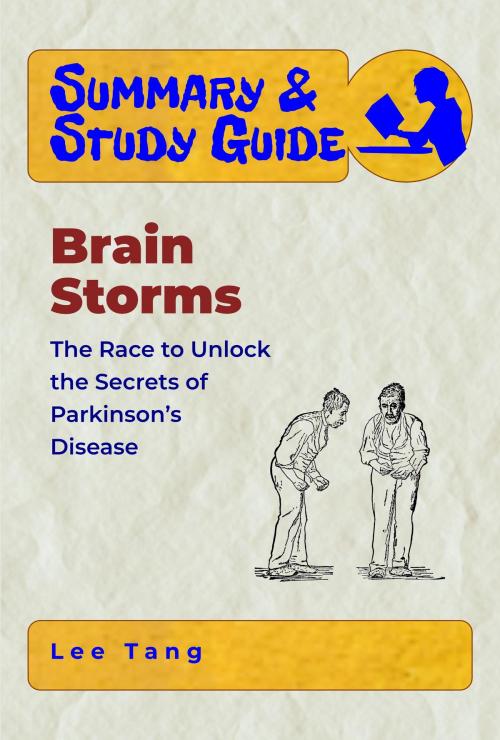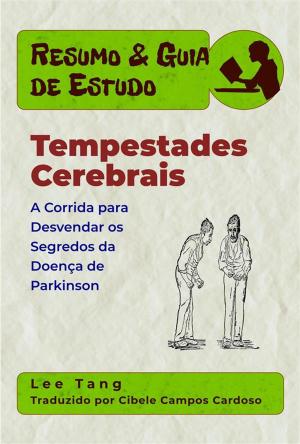Summary & Study Guide - Brain Storms
The Race to Unlock the Secrets of Parkinson's Disease
Nonfiction, Health & Well Being, Health, Ailments & Diseases, Physical Impairments, Nervous System & the Brain, Medical, Diseases| Author: | Lee Tang | ISBN: | 9780994764089 |
| Publisher: | LMT Press | Publication: | March 13, 2017 |
| Imprint: | Language: | English |
| Author: | Lee Tang |
| ISBN: | 9780994764089 |
| Publisher: | LMT Press |
| Publication: | March 13, 2017 |
| Imprint: | |
| Language: | English |
Comprehensive Review of Parkinson’s Disease
The must-read summary of “Brain Storms” by Jon Palfreman
When award-winning science journalist Jon Palfreman investigated a group of drug addicts who mysteriously ended up with Parkinson's-like symptoms, he never imagined that 25 years later he would contract the disease himself. Parkinson's is a progressive neurodegenerative disorder. Currently, about seven million people globally, and one million Americans have Parkinson's, with 60,000 new U.S. cases each year.
Parkinson's is a disease that has entranced doctors and scientists for two centuries since the British physician James Parkinson described its symptoms in 1817. In Brain Storms, Palfreman chronicles the scientific history of the race to unlock the secrets of the disease. It is a story of many twists and turns. It turns out that the classic motor symptoms of Parkinson's disease—tremors, rigidity, slowness of movement, and postural imbalance—are just the tips of a clinical iceberg. This means that in addition to movement problems, people with Parkinson's disease have to cope with a wide range of adverse symptoms from constipation to dementia. The disease can be caused by environmental toxins. And some forms of the disease can be passed to future generations. Out goes the old dopamine-centered theory of the disease, which was introduced in the late 1960s. And in comes a new theory about the disease that may offer the possibility of disease-modifying therapy.
This guide includes:
- Book Summary—helps you understand the key concepts.
- Online Videos—covers the concepts in more depth
Value-added of this guide:
- Save time
- Understand key concepts
- Expand your knowledge
Read this summary to get an up-to-date review of this mysterious disease.
Comprehensive Review of Parkinson’s Disease
The must-read summary of “Brain Storms” by Jon Palfreman
When award-winning science journalist Jon Palfreman investigated a group of drug addicts who mysteriously ended up with Parkinson's-like symptoms, he never imagined that 25 years later he would contract the disease himself. Parkinson's is a progressive neurodegenerative disorder. Currently, about seven million people globally, and one million Americans have Parkinson's, with 60,000 new U.S. cases each year.
Parkinson's is a disease that has entranced doctors and scientists for two centuries since the British physician James Parkinson described its symptoms in 1817. In Brain Storms, Palfreman chronicles the scientific history of the race to unlock the secrets of the disease. It is a story of many twists and turns. It turns out that the classic motor symptoms of Parkinson's disease—tremors, rigidity, slowness of movement, and postural imbalance—are just the tips of a clinical iceberg. This means that in addition to movement problems, people with Parkinson's disease have to cope with a wide range of adverse symptoms from constipation to dementia. The disease can be caused by environmental toxins. And some forms of the disease can be passed to future generations. Out goes the old dopamine-centered theory of the disease, which was introduced in the late 1960s. And in comes a new theory about the disease that may offer the possibility of disease-modifying therapy.
This guide includes:
- Book Summary—helps you understand the key concepts.
- Online Videos—covers the concepts in more depth
Value-added of this guide:
- Save time
- Understand key concepts
- Expand your knowledge
Read this summary to get an up-to-date review of this mysterious disease.















